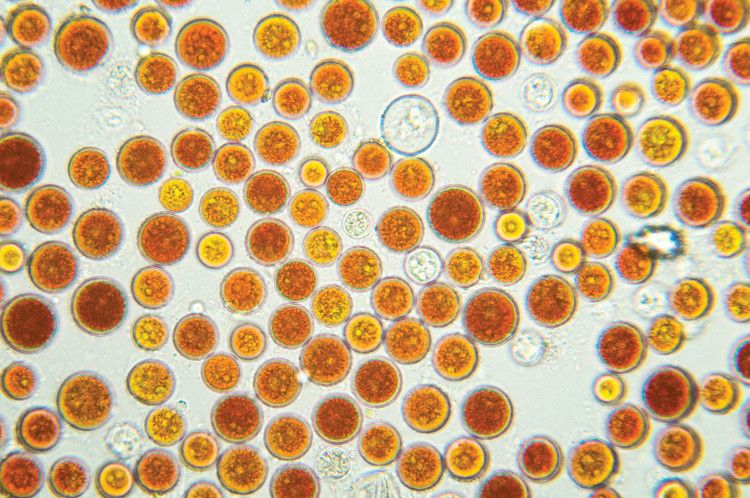Algal astaxanthin superior to alternative forms, says recent review
A review published in Functional Foods in Health and Disease compared the efficacy of astaxanthin sourced from algae (Haematococcus pluvialis), synthetic astaxanthin sourced from petrochemicals, and astaxanthin sourced from genetically-manipulated yeast Xanthophyllomyces dendrorhous.
Photo © iStockphoto.com/NNehring

A review recently published in Functional Foods in Health and Disease1 compared the efficacy of astaxanthin sourced from algae (Haematococcus pluvialis), synthetic astaxanthin sourced from petrochemicals, and astaxanthin sourced from genetically-manipulated yeast Xanthophyllomyces dendrorhous (commonly called Phaffia because of its previous nomenclature Phaffia rhodozyma). The researchers used in vitro and animal studies to reveal the differences in antioxidant strength and health benefits.
Results from in vitro studies showed algal astaxanthin was more active as an antioxidant than synthetic astaxanthin by a factor of 14 to 90 times. The chemical similarities between synthetic astaxanthin and Phaffia-based astaxanthin indicates that the latter is also a less effective antioxidant. Five animal trials in different animal species also demonstrated that algal astaxanthin was more efficacious for a variety of health benefits, compared to the other two forms of astaxanthin. For example, algae-based astaxanthin was superior in increasing survival rates, improving resistance to environmental stress, improving exercise endurance, preventing gastric ulcers, expanding antioxidant activity, and increasing growth rates.
One of the studies in the review also demonstrated that esterified forms of astaxanthin were superior to non-esterified forms on rats. The study extracted the total carotenoid fraction from Haematococcus pluvialis and then separated the fractions into non-esterified astaxanthin, mono-esterified astaxanthin, and di-esterified astaxanthin. The esterified forms were found to be superior to non-esterified form in preventing the formation of skin cancer, amplifying antioxidant activity, augmenting retinol conversion in the liver, and increasing tyrosinase enzyme levels.
The majority of astaxanthin derived from Haematococcus pluvialis is esterified, while synthetic astaxanthin, and Phaffia-based astaxanthin are non-esterified. This provides yet another factor that sets apart algal astaxanthin from the rest.
“In addition to these eight studies demonstrating superior efficacy and activity for algal astaxanthin, it’s important to understand that there are absolutely no human clinical trials we found demonstrating any health benefit or even safety for the alternative astaxanthin forms,” said Shawn Talbott, PhD, president of EQQIL (a clinical research organization), and an author of the review paper, in a press release. “Until clinical trials are published on synthetic astaxanthin and astaxanthin from Phaffia yeast showing efficacy and long-term human safety studies are conducted, our conclusion is that consumers should ensure that they’re supplementing with algal-based astaxanthin. Algal astaxanthin has over 100 clinical trials showing efficacy, numerous human safety studies, and twenty years of consumer use in the market.”
References:
1. Capelli B et al. “Astaxanthin sources: Suitability for human health and nutrition.” Functional Foods in Health and Disease, vol. 9, no.6 (2019): 430-445